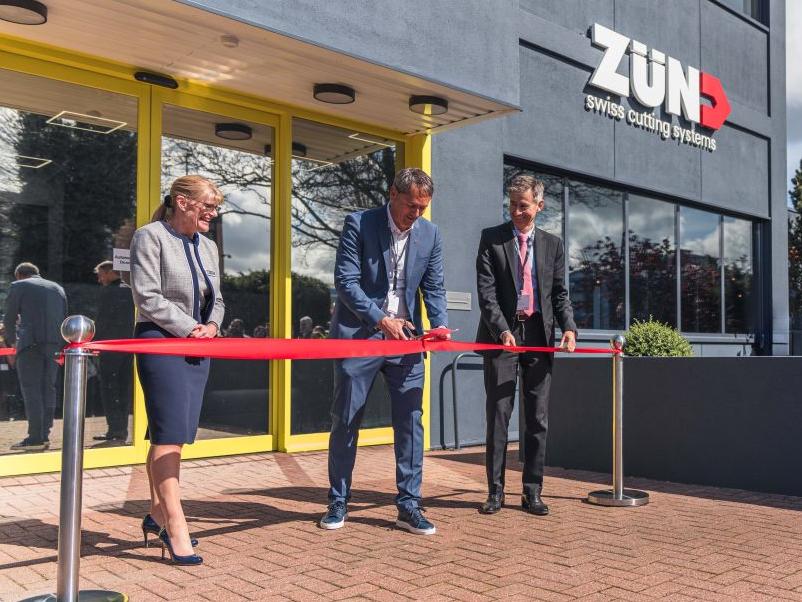Driving the future of mobility

DuPont’s global market manager automotive, Carlo Fiorella, reveals how the company is helping to drive the future of mobility through material science in the exciting world of the Formula 1 industry.
In Formula 1, the difference between glory and defeat comes down to the smallest of margins – thousandths of a second, a millimetre or a gram. Every team works relentlessly for their car to be the fastest, lightest, and most reliable, without compromising on performance or safety.

At DuPont, we’re no stranger to the automotive industry, collaborating with partners in the sector for over 100 years and supporting automotive manufacturers around the world to develop materials and technologies that help solve their most complex problems. We’ve developed revolutionary ways to reduce weight, improve heat and thermal management, boost connectivity and make cars safer for drivers. But for me, F1 is also the ultimate test of engineering and materials science. Constantly pushing the limits to the extreme, the solutions developed for the track have a direct link to the evolution of the road car.
Our team thrives on the challenge, which is why we entered the multi-year technical partnership with the Alpine F1 Team to co-engineer the future of mobility and unlock technological advancements that will define the future of F1. With the Alpine team, we’re working to anticipate, research, develop and apply the latest in engineering and material science, with a core focus on innovations that will improve and enhance the performance and safety of cars on the track.
A successful formula
Alongside this, with Formula 1 renowned for being at the forefront of new technologies, we anticipate that many of our F1 breakthroughs will be adapted to improve the safety and performance of the future hybrid and electric vehicle. There is no better time for this as automakers and OEMs shift their focus from internal combustion engines to re-engineering their fleet to fully electric vehicle components and systems.
As part of the partnership, we have two working groups comprising Alpine F1 team colleagues and DuPont technical team members, collaborating with agility and speed to respond to any changes in the motorsport. One group is based at Enstone in the UK for chassis items, the other in Viry-Châtillon, France focusing on hybrid powertrain items. Obviously, with the current Covid-19 pandemic, safety is of the upmost importance for both teams, so we are currently implementing virtual work for the partnership. The teams regroup on at least a weekly basis to discuss focus areas and solutions for both the current and future rules packages within the sport.
Readers who are racing enthusiasts may be aware of Kevlar and Nomex, two DuPont materials that we are utilising in this partnership and throughout F1. Both Kevlar and Nomex are manufactured with a number of crucial applications through not just the F1 car itself, but also in the protective gear worn by drivers and team members.
Nomex is prominent in the personal protection apparel of racing drivers and crews – an incredibly durable, inherently flame-resistant meta-aramid fibre. The unique structure of Nomex is non-flammable, so it helps play a vital role in providing enduring protection for F1 drivers when they need to escape a fire on the track or during a pit lane incident. When Nomex is exposed to exceptional heat, its fibres thicken and carbonise which absorbs heat energy in the process. This flame-resistance cannot be washed or worn away, it’s inherent to the fibre chemistry. In motorsport, Nomex is used by 95% of all racing professionals around the world to provide thorough body coverage.
A recent notable incident where we saw Nomex in action was the frightening crash at the Bahrain Grand Prix in November last year, where the driver made impact with the circuit’s safety barrier at 137mph, sustaining at impact of 53G and splitting his vehicle in half. The driver was engulfed in a fireball for 28 seconds, yet he had only sustained minor burns on his hand and feet – the only areas not covered by his Nomex suit. It not only resisted the heat from the fire, but also self-extinguished the flames to ensure the driver sustained minimal injuries. Whilst the crash was graphic, the incident is an illustration of the importance of making safety-specific material science and advancements within the motorsport.
Making material gains
Our ballistics grade protective fibre, Kevlar, is also used widely throughout motorsport. It can be added to the vehicle chassis composite structures, requiring both strength and light weight, whilst also used as the base material for fuel cells within the chassis structure – again, as the perfect balance of strong and durable, without adding unnecessary weight to the vehicle, where every gram counts.

Nomex can also be used widely throughout the vehicles themselves. Following the need to create even more lightweight solutions while offering the same high standard of safety, DuPont engineers developed a paper version of Nomex. This Nomex paper can be shaped into a honeycomb structure which offers vehicle bodywork with impressive structural rigidity at a very light weight – an essential balance for any motor racing team. Once again, it provides flame-resistance, great insulation and chemical resistance which are all important factors when analysing the heat, complex electric systems and pressure that are found in a F1 car during a race. Nomex is also found in crumple zones in the chassis with its ability to absorb and dissipate energy, offering an increase in protection for drivers in the event of a crash.
Specialised grades of Nomex paper are also highly effective electrical insulation materials – which today are incorporated into the car’s advanced hybrid-electric motor, enabling it to run hotter, faster and longer, increasing thermal efficiency and reducing the risk of malfunctions on race day. This solution is a great example of our ‘track to road’ mentality, where we have taken Nomex’s hybrid-electric motor insulation successes from the extreme environments of Formula 1 and is now the standard design for the future of road cars – electric vehicles.
For our partnership with the Alpine F1 Team, our goal is to unlock the full potential of the cars on the track, learn from the performances we see, and ensure we’re focusing on the right elements for research and development of new materials and solutions that can help benefit the team. As the automotive industry continues to evolve at an unprecedented rate, both DuPont and the Alpine F1 team are utilising the motorsport as a ‘laboratory on wheels’ – continuing to develop technologies that are key to success on the track and for the manufacturers of the vehicles we see on our roads.









